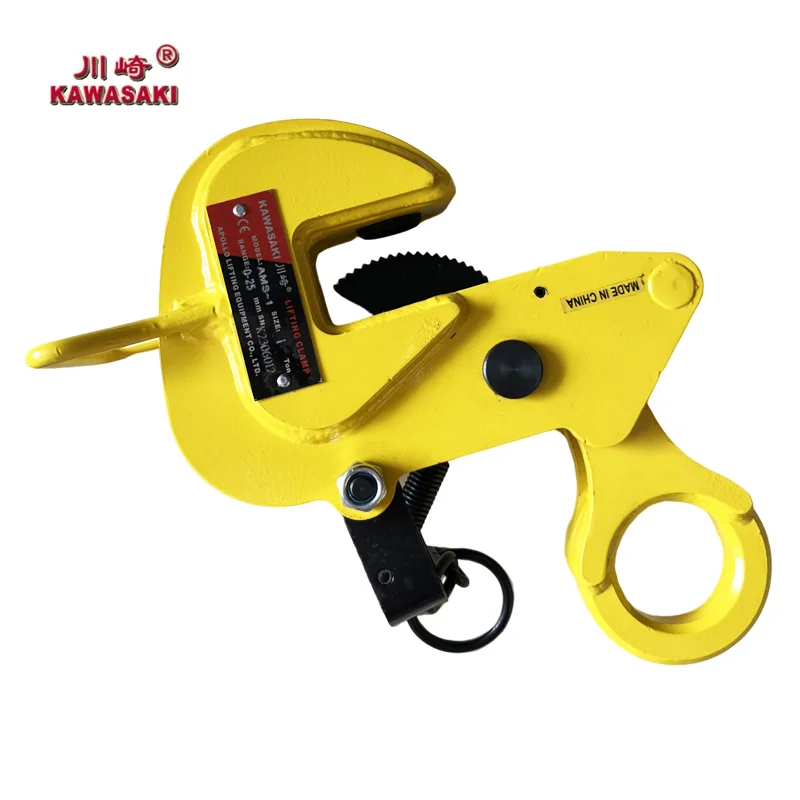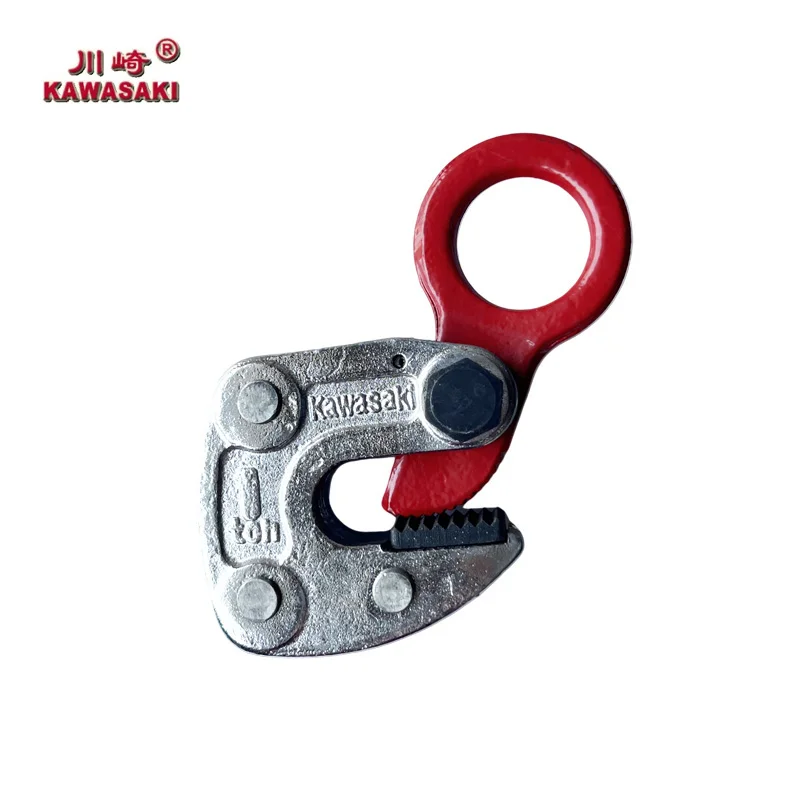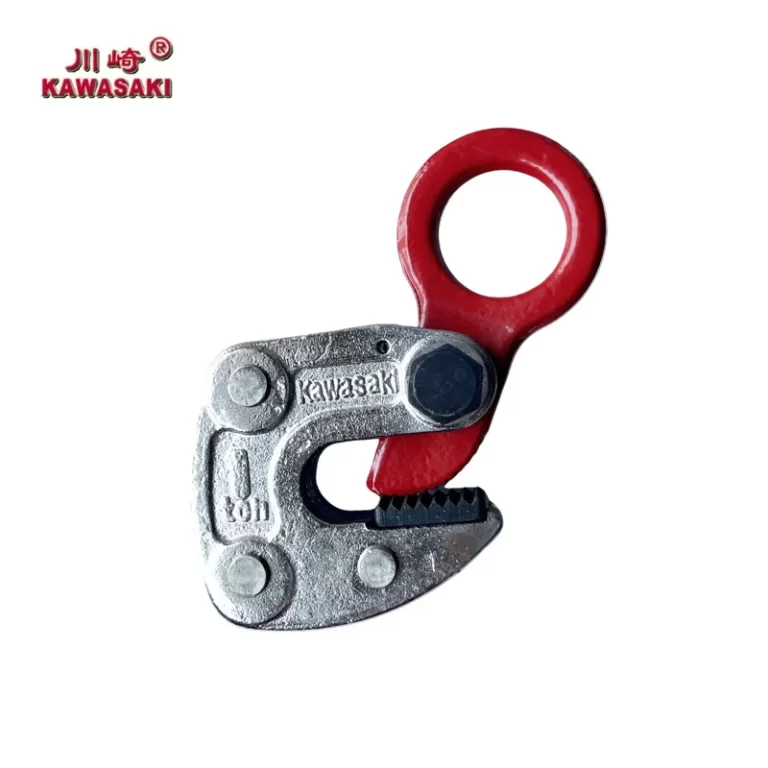Plate clamps, these powerful industrial tools, serve as reliable partners for lifting heavy steel sheets and flat materials accurately and safely. Found on busy job sites, active production floors, and organized storage facilities, these durable devices help position materials smoothly. Both vertical and horizontal plate clamps offer distinct advantages. Understanding their different structures, weight limits, and best applications is key to selecting the right clamp and ensuring safe operations. This guide explores plate clamp options, highlighting how APOLLO provides superior solutions that enhance productivity and dependability through consistent quality.
What Are Plate Clamps and Where Are They Used?
Plate clamps form the foundation for safely raising thick steel plates or flat surfaces. These dependable tools excel in settings where moving large, flat items is routine. Below, we examine their purpose and the various fields where they operate.
Overview of Plate Clamps
Plate clamps are clever lifting tools designed to grasp and raise heavy steel plates with firm strength. They perform best in industries requiring precise handling of flat materials. Available in vertical and horizontal styles, each type suits specific lifting angles. Picking the correct clamp depends on lift direction, material weight, and work environment. Their rugged construction guarantees safety and smooth performance.
Key Applications of Plate Clamps in Industrial Settings
In industrial environments, plate clamps are vital. Construction crews use them to position steel sheets accurately. Factories employ them to move raw materials effortlessly. Storage facilities rely on them to organize metal plates systematically. Their flexibility makes them ideal for tasks like aligning plates during assembly or transferring them between work areas. With such adaptability, plate clamps serve multiple roles across various sectors.
To grasp their specialized functions, let’s examine the unique aspects of vertical plate clamps and their ideal uses.
What Makes Vertical Plate Clamps Unique?
Vertical plate clamps are built for one main job: lifting materials vertically with complete assurance. Their structure and operation distinguish them as specialized tools for particular jobs. Here’s what sets them apart.
Characteristics of Vertical Plate Clamps
Design and Mechanism
Vertical plate clamps feature a smart design with a rotating jaw that tightens as tension rises. This keeps the plate stable during upright lifts. Many models include a strong locking system that acts as a safety measure against sudden releases. Such careful engineering ensures steadiness and security in tough conditions.
Load Capacity Considerations
The power of vertical plate clamps comes from their ability to manage significant weights. Made from tough alloy steel, they withstand heavy loads while meeting strict safety rules. Choosing a clamp with the proper weight rating is essential. This guarantees it can perform the job safely and effectively.
Common Scenarios for Using Vertical Plate Clamps
Lifting and Moving Steel Plates Vertically
Vertical plate clamps work best when lifting steel plates straight up. Whether loading materials onto transport vehicles or placing them for fabrication, these clamps provide exact control with every lift.
Applications in Construction and Manufacturing
In building projects, vertical plate clamps are crucial for moving structural steel parts precisely. Production plants use them to handle raw materials quickly, keeping workflows efficient. Their trustworthiness makes them invaluable in these fast-moving settings.
Moving from vertical to horizontal, let’s see how horizontal plate clamps fill their own important role in material handling.
How Do Horizontal Plate Clamps Differ?
Horizontal plate clamps are made for a separate purpose: securing flat-lying plates with total reliability. Their distinct structure and uses make them necessary for certain jobs. Let’s review their key traits.

Characteristics of Horizontal Plate Clamps
Design and Mechanism
Horizontal plate clamps have twin jaws that work together, applying balanced pressure across a plate’s surface. This secure but gentle hold prevents damage while maintaining a strong grip. Their design focuses on keeping flat materials steady during movement, perfect for horizontal operations.
Load Capacity Considerations
Like vertical clamps, horizontal versions are constructed for durability. Made from sturdy alloy steel, they handle large weights comfortably. Their design emphasizes even weight distribution, providing stability for flat plates during transport or storage.
Common Scenarios for Using Horizontal Plate Clamps
Securing Plates for Horizontal Transport
Horizontal plate clamps are ideal for stabilizing plates during facility transfers or off-site shipping. Their tight grip reduces shifting, ensuring materials reach their destination undamaged.
Applications in Warehousing and Logistics
In storage centers, these clamps bring efficiency, allowing neat piling of metal sheets. In shipping operations, they speed up loading, making flat material handling fast and simple. Their contribution in these areas is highly valuable.
After reviewing both types, let’s contrast their benefits to help with your selection process.
Comparing Vertical and Horizontal Plate Clamps
Vertical and horizontal plate clamps each provide unique benefits suited to specific lifting requirements. Recognizing their variations in structure, safety, and adaptability helps determine the right clamp for your needs. Here’s the breakdown.
Differences in Functionality and Design
Vertical plate clamps are made for upward lifting. Their rotating jaw clamps firmly as tension grows, ensuring a solid hold. This makes them excellent for jobs needing vertical positioning. Horizontal plate clamps are intended for level surfaces. Their paired jaws spread force uniformly, protecting the material while keeping a tight grip. Both types are constructed from high-grade alloy steel, ensuring toughness and adherence to safety regulations. Their designs match their specific lifting directions, making each type ideal for its purpose.
Safety Considerations When Choosing a Clamp Type
Safety is critical when picking a clamp. The material’s position determines the choice. Vertical clamps suit upright tasks. Horizontal clamps work best with flat plates. Selecting the wrong type may lead to instability and hazards. Always pair the clamp with the job to ensure secure and safe performance.
Efficiency and Versatility in Various Industrial Tasks
Plate clamps improve efficiency by simplifying material handling. Vertical clamps excel in construction, placing structural elements accurately. Horizontal clamps aid storage, enabling tidy stacking of metal sheets. Their usefulness extends across industries, from production to distribution, making them essential tools for many applications.
With these distinctions clear, let’s discuss how to pick the proper clamp for your requirements, featuring APOLLO’ outstanding options.
Recommendations for Choosing the Right Clamp Type
Selecting the ideal plate clamp involves evaluating several aspects. The correct choice boosts productivity and maintains safety. Below are the main points to consider, along with how APOLLO deliver excellent solutions.
Factors to Consider When Selecting a Plate Clamp
Material Type and Thickness of Plates
Your materials’ characteristics and thickness matter greatly. Thicker plates need clamps with greater weight capacities. Thinner plates require models that prevent surface harm. Matching the clamp to the material ensures both security and effectiveness.
Load Requirements and Handling Conditions
Weight capacity is crucial. Select a clamp rated for your material’s weight or higher. Also consider environmental factors like high heat or corrosive exposure. These conditions affect clamp function and lifespan.
How APOLLO Meet Industry Standards
APOLLO Vertical Plate Clamps: Features and Benefits
APOLLO vertical plate clamps are built for precision and reliability. Their locking system works like a safety guard, preventing unexpected releases. Made from top-quality alloy steel, these clamps handle heavy loads effortlessly, delivering excellent results in challenging situations.
APOLLO Horizontal Plate Clamps: Features and Benefits
APOLLO horizontal plate clamps are engineered for secure, gentle handling. Their twin jaws apply even pressure, protecting surfaces while maintaining a firm hold. Designed for longevity, they manage substantial weights confidently, making them a preferred choice for horizontal applications.
For experts needing trustworthy lifting solutions, APOLLO supply a selection of high-grade tools made for accuracy, durability, and safety.
To maintain your plate clamps’ top performance, proper upkeep and safety measures are necessary. Let’s review how to ensure their durability and safe use.
Maintenance and Safety Tips for Using Plate Clamps
Correct care and safe usage are vital for extending the life and functionality of plate clamps. Following best practices ensures both protection and efficiency. Here are the key points.
Proper Inspection Practices Before Use
Before each use, examine your plate clamps carefully. Look for wear or damage on jaws and locking parts. A detailed inspection identifies problems early, guaranteeing safe operation every time.
Ensuring Optimal Performance Through Regular Maintenance
Lubricate moving components to reduce friction and wear. Store clamps in dry locations to avoid rust, particularly after harsh conditions. Routine maintenance keeps your clamps in top shape, prepared for any task.
Guidelines for Safe Operation of APOLLO Plate Clamps
Follow APOLLO’s instructions exactly. Position the clamp properly on the material for a secure hold. Never surpass the clamp’s weight limit, as this endangers safety and equipment. Proper use ensures reliable and safe clamp performance.
FAQ
Q1: Can vertical plate clamps work horizontally?
A: No. Vertical plate clamps are meant for upward lifts. Using them horizontally may reduce grip strength and risk safety.
Q2: How frequently should plate clamps be checked?
A: Inspect plate clamps before every use. This helps spot any problems affecting performance or safety early.
Q3: Do high-quality plate clamps need special certifications?
A: Yes. Trusted plate clamps, like APOLLO’s, follow standards such as CE or ISO. These certifications confirm they meet strict safety criteria.


